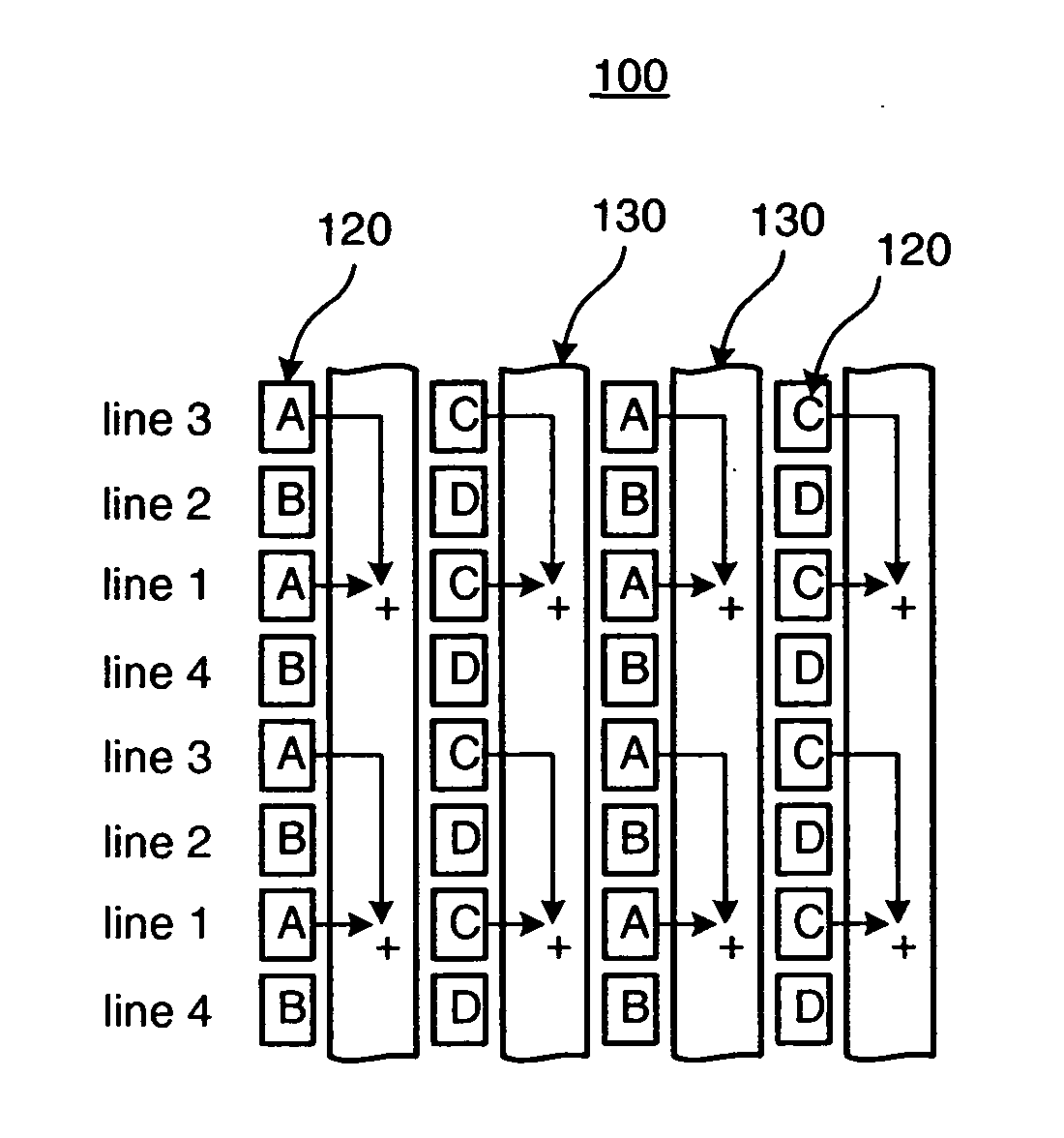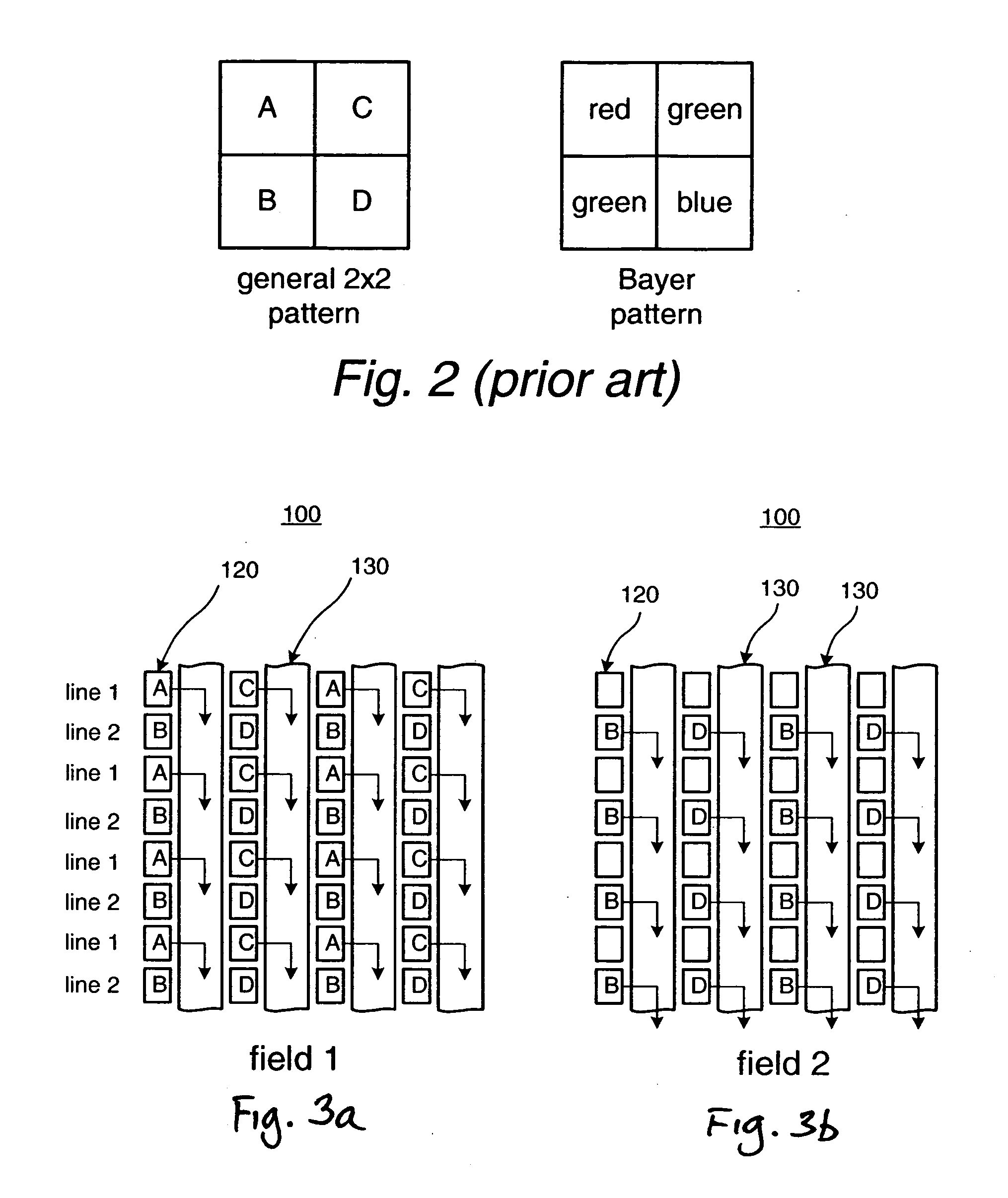Image sensor for still or video photography
a still or video photography and image sensor technology, applied in the field of still or video photography, can solve the problems of only 4% of the photodiodes used in sub-sampling the image by a factor of 5 and still leaves some pixels un-sampled
- Summary
- Abstract
- Description
- Claims
- Application Information
AI Technical Summary
Benefits of technology
Problems solved by technology
Method used
Image
Examples
Embodiment Construction
[0041] Referring to FIGS. 3a and 3b, there is shown the image sensor 100 of the present invention. For clarity, only a small portion of the pixel array of the image sensor 100 is shown. It consists of an array of photodiodes 120 with VCCDs 130 positioned in between columns of photodiodes 120. There are color filters repeated in a 2×2 array spanning across the entire photodiode array. The 4 color filters A, B, C, and D are of 3 or 4 unique colors. The colors typically are, but not limited to, A=red, B=C=green, D=blue. Other common color schemes utilize cyan, magenta, and yellow or even white filters.
[0042] Referring briefly to FIG. 4, one pixel is shown. The VCCD 130 is of the interlaced 4-phase type with two control gate electrodes 132 and 134 per photodiode 120.
[0043] Referring back to FIG. 3a, the full resolution read out of an image stored in the photodiodes 120 proceeds in the below-described manner for an interlaced image sensor 100. First the charge in field 1, consisting of...
PUM
 Login to View More
Login to View More Abstract
Description
Claims
Application Information
 Login to View More
Login to View More - R&D
- Intellectual Property
- Life Sciences
- Materials
- Tech Scout
- Unparalleled Data Quality
- Higher Quality Content
- 60% Fewer Hallucinations
Browse by: Latest US Patents, China's latest patents, Technical Efficacy Thesaurus, Application Domain, Technology Topic, Popular Technical Reports.
© 2025 PatSnap. All rights reserved.Legal|Privacy policy|Modern Slavery Act Transparency Statement|Sitemap|About US| Contact US: help@patsnap.com



